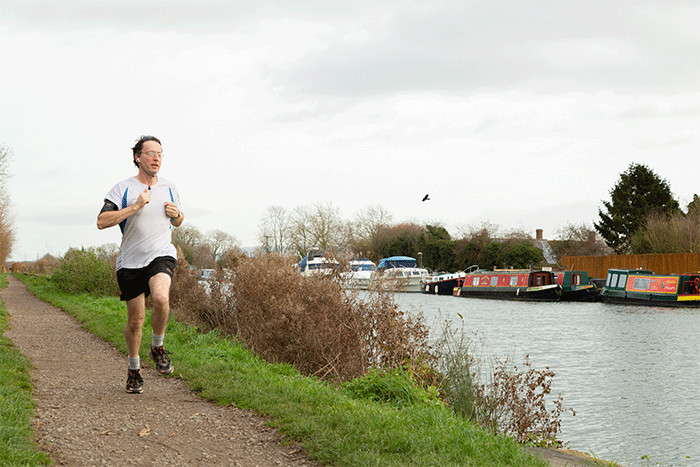WWT hero stops invasive plant from reaching nature reserve
A Senior Technology Officer at Slimbridge has all but eradicated Himalayan Balsam from the canal during his lunchtime running sessions.

Robin Jones, who only took up running in 2012, has pulled up 5709 balsams since April, covering nearly 286km – the distance between Bristol to Liverpool. His dedication has earned him a Marsh Impact Volunteer Award from the Canal and River Trust.
He began targeting the plant, which destroys other natives around it by releasing poison, after fears were raised that it would eventually spread to the nature reserve which sits near the canal banks.
Robin said: “I wouldn’t go for lunchtime runs as half as much as if I didn’t think there was balsam to be stopped. It’s keeping me fit.
“The plant’s small seeds are spread by an explosive head which can project them several metres away, meaning they spread like wildfire.
“I knew I had to take action before it ended up in the grounds of Slimbridge and thankfully it’s paid off.”
Himalayan Balsam was first brought to Britain by explorers in the early 19th century and first recorded in the wild in 1855. It is a tall, easy-on-the-eye, annual herb which grows pink, purple flowers. It thrives particularly along river beds, where it outmatches native species.
But thanks to Robin’s hard work, the local plants have been stopped in their tracks. Not that he’s given up his battle with the balsam. He’s now turned his attention to Orange Balsam which originates in North America, and unlike Himalayan Balsam, has reached Slimbridge.
Robin added: “These plants may look pretty but they pose a real danger to our native species and now WWT is working on removing it from the reserve.
“It just goes to show you the power of individual people taking action. Everyone has the potential to make a difference.”
WWT
Share this story




